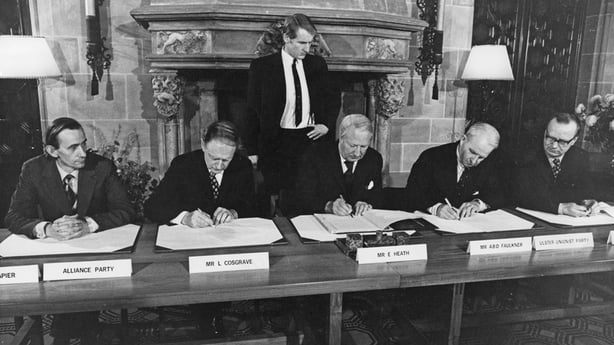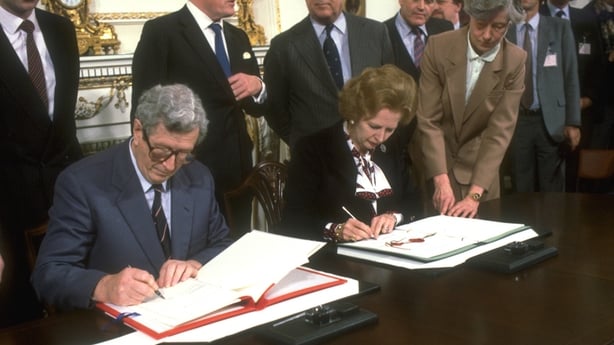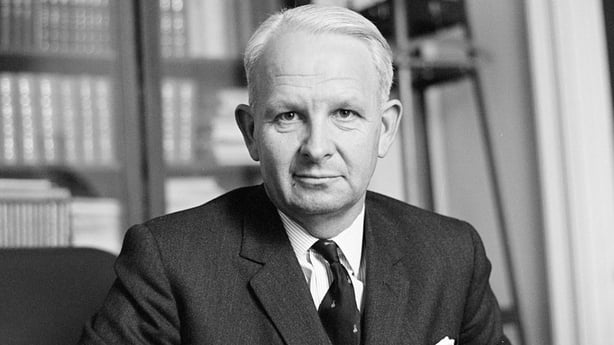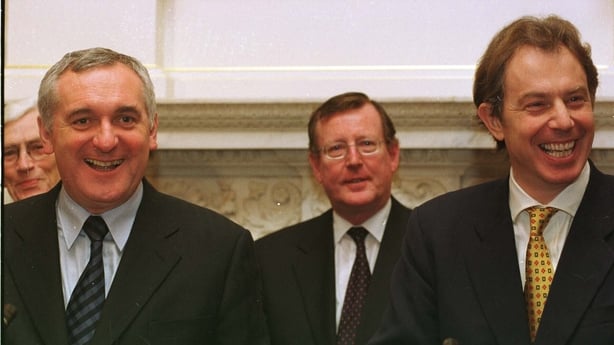Unionists had feared "the south" had designs on the north since the Treaty was signed in 1921. This distrust led to serious tension during the lead up to the Belfast Agreement, as Marie Coleman explains
The north-south dimension (known as Strand 2) to the 1998 Belfast Good Friday Agreement is not always given the significance it deserves, with the focus usually being on the significance of the new framework for running Northern Ireland that was produced by the agreement. Yet an examination of the negotiations in the days leading up to the deal illustrates the potential of Strand 2 to wreck any chance of success.
This should come as no surprise given unionist fears of the south’s designs on the north going back to the Boundary Commission clause of the Ango-Irish Treaty in 1921. Between 1921 and 1925 the potential of the Boundary Commission to truncate the north’s territory created a great sense of insecurity for James Craig’s government. The declaration of the Republic in 1949 led the British government to legislate to reassure unionists of Northern Ireland’s future within the Union. Unionist opposition to the power-sharing executive proposed under the 1973 Sunningdale Agreement was grounded in the fear that Dublin was 'just a Sunningdale away’.

The shadow of Sunningdale
The memory of these episodes from history had a strong influence on the negotiations throughout late 1997 and early 1998. The shadow of Sunningdale’s failure loomed large over the talks process as they entered their final stages in March and April 1998.
In 1973, the Irish government’s insistence on the inclusion of the Council of Ireland, to placate the SDLP, did much to undermine unionist confidence and fuel loyalist popular protest, both of which collapsed that deal in 1974. The enhanced role for the Irish government in Northern Ireland conceded under the 1985 Anglo-Irish Agreement engendered bitter unionist opposition, a memory that was still quite fresh just over a decade later.

David Trimble, the Ulster Unionist Party leader in 1998, was conscious that unionist perceptions of creeping southern irredentism via Strand 2 could damage his leadership similar to the fate of his predecessor Brian Faulkner in the 1970s.
Having been one of Faulker’s most strident critics at the time of Sunningdale, no one understood this better than Trimble. Writing of the UUP leader in his 2004 biography, Dean Godson commented that ‘The ghost of Faulkner thus hangs over much of what Trimble does’. Nowhere was this more obvious than in regard to negotiating Strand 2 of the Good Friday Agreement.

Trimble’s speech to his party’s AGM on 21 March 1998, at a crucial juncture in the talks, sent out a very strong message both to the party faithful and the other negotiators – his party would not ‘agree to any form of north-south relationship which would establish an embryonic all-Ireland government’.
Strand 2 remained hotly contested up to the final day. Over a working breakfast at Hillsborough Castle on Wednesday 8 April, the British Prime Minister Tony Blair and the Taoiseach Bertie Ahern (who would make a hasty flight back to Dublin for his mother’s funeral after the meeting) worked intensively to salvage the deal which unionists looked to be on the verge of rejecting, in large measure over Strand 2. A list of proposed north-south bodies, published as an annex to Senator Mitchell’s final draft had ‘taken the UUP over the brink.’

The scale of co-operation envisaged, covering 25 areas, was problematic, as was the extent of harmonisation envisaged for key services such as health and education. A further stumbling block was the apparently superior roles for the Dáil and the Westminster Parliament in establishing the cross-border bodies, to the exclusion of the proposed new Northern Ireland Assembly. This had been included to address nationalist concerns that a unionist-dominated Assembly would have a veto over the institutions rendering them ineffective.
A suitable compromise
Intense negotiations, in which both heads of government took a key role, reached a suitable compromise with a toning down of language, reducing the number of cross-border bodies and enhancing the power of the Assembly in their operation. This allowed David Trimble to argue that he had succeeded where Brian Faulkner had failed in keeping southern interference at bay, even if it was at the price of unionist concessions in other areas, in particular around prisoner releases.
The recent re-emergence of unionist fears for Northern Ireland’s future within the United Kingdom in the context of post-Brexit trading arrangements, growing demands for a border poll, the loss of unionism’s political majority and demographic changes in the north suggest that unionism’s sense of threat from the south remains as strong today as it did in 1998, 1973, 1949 and 1921.
The two part documentary series The Agreement airs on RTE One on April 3rd at 9.35pm and on April 4th at 10.15pm.
This article is part of a collection marking the 25th Anniversary of the Belfast/Good Friday Agreement coordinated by Queen's University Belfast. Its contents do not represent or reflect the views of RTÉ.
















































